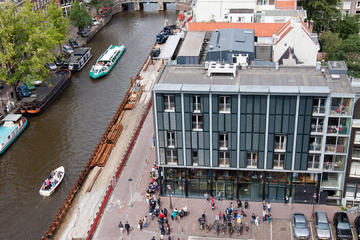Anne Frank House (Anne Frankhuis)
TIME : 2016/2/22 12:07:19

Anne Frank House (Anne Frankhuis)
It is one of the 20th century's most compelling stories: a young Jewish girl forced into hiding with her family and their friends to escape deportation by the Nazis. The house Otto Frank used as a hideaway for his family kept them safe until close to the end of World War II. It was here that the young Anne Frank wrote in her diary, as a way to deal with both the boredom and her own thoughts.
The focus of the Anne Frank House museum is the achterhuis (rear house), also known as the secret annex. It was in this dark, airless space that the Franks observed complete silence during the day, outgrew their clothes, and read Dickens, before being mysteriously betrayed and sent to their deaths. Anne's famous diary describes how restrictions were gradually imposed on Dutch Jews: from being forbidden to ride streetcars to not being allowed to visit Christian friends.
The Anne Frank House itself, for the most part, has been left intact. As you walk through the building, try to imagine Anne’s experience growing up here, and documenting all that she saw and felt. Indeed, a visit here is a moving experience.
Practical Info
The Anne Frank House is located on the Westermarkt, easily accessible via tram to Westermarkt. Queues can be long at peak times, especially in the early afternoon, when you may have to wait an hour or more to get in. To avoid long lines, try to arrive early or late in the day.
You won’t need much time inside; 30 minutes should be enough for you to see what there is to see and pause for a moment of reflection. If you have time, stop in next door, at no. 265-267, to see temporary exhibits.
